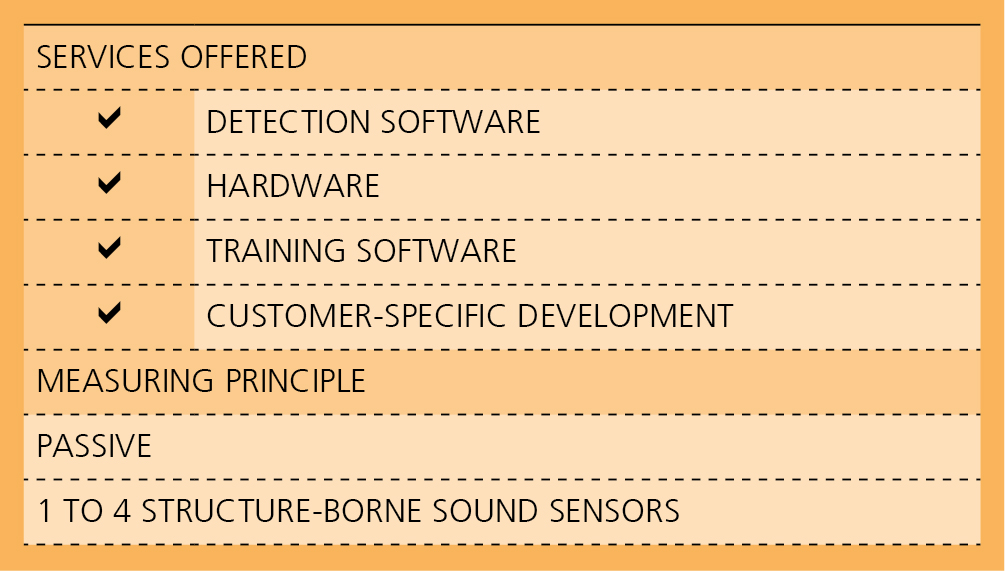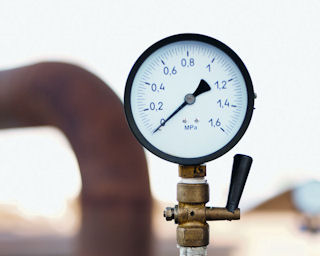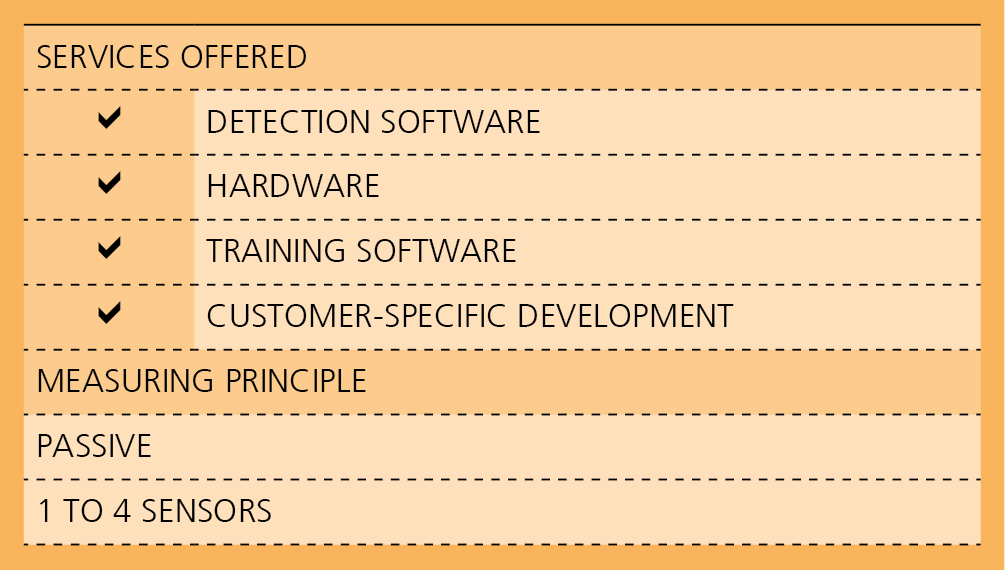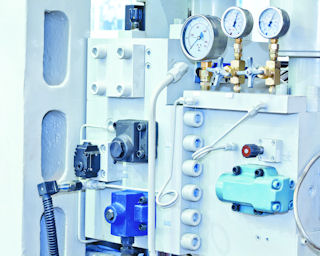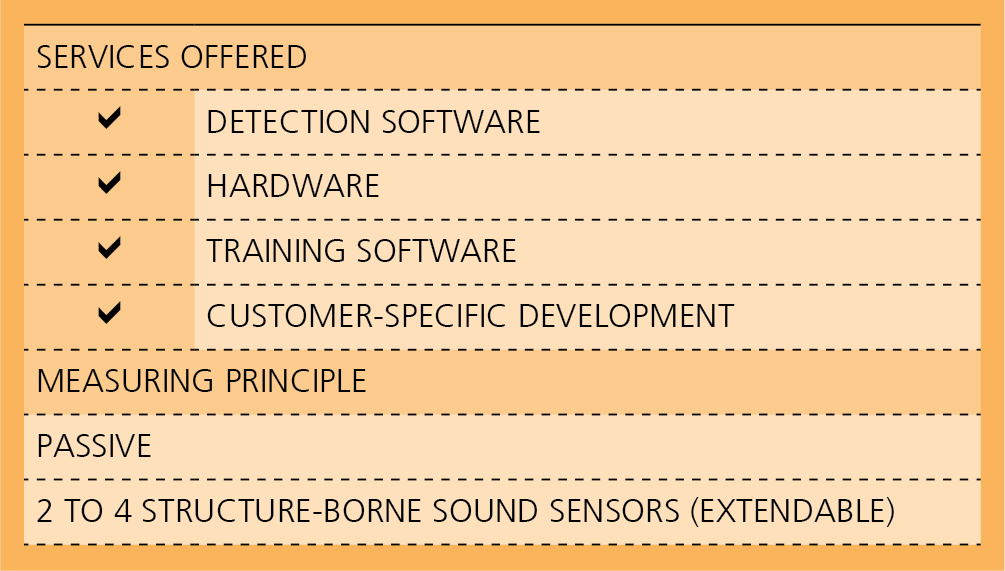Wear monitoring
Moving parts in machines and plants are subject to high loads. Failure can lead to downtime, costly repairs, and production losses.
Early detection of defects in wear parts, such as rollers, bearings, valves, and gears can be very beneficial from an economic standpoint. In safety-sensitive areas, such as chemical plants, failure of these parts can have devastating consequences. For example, valves that cannot be closed properly and hence allow liquid to continue flowing unimpededly must be replaced before failure occurs.
A mere good-or-bad distinction is not sufficient. Wear monitoring solutions developed at Fraunhofer IKTS offer a new approach: with the help of service life analysis, the residual life of a part can be determined. This provides an indication of when the part in question will need to be replaced.

